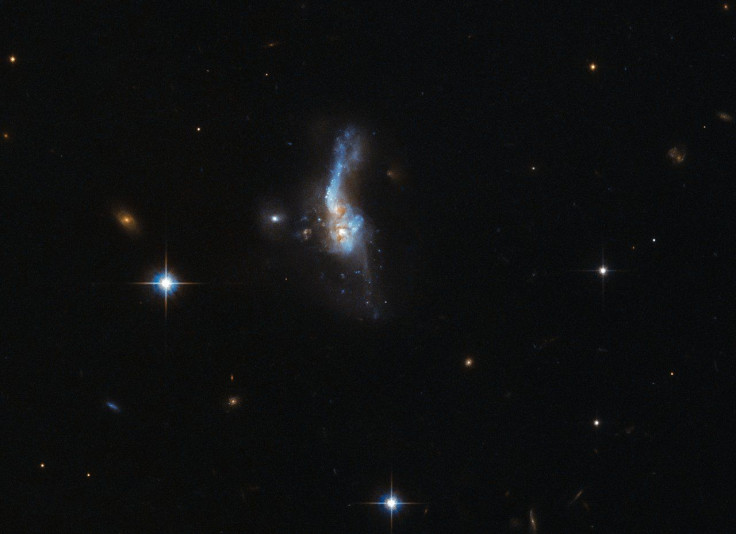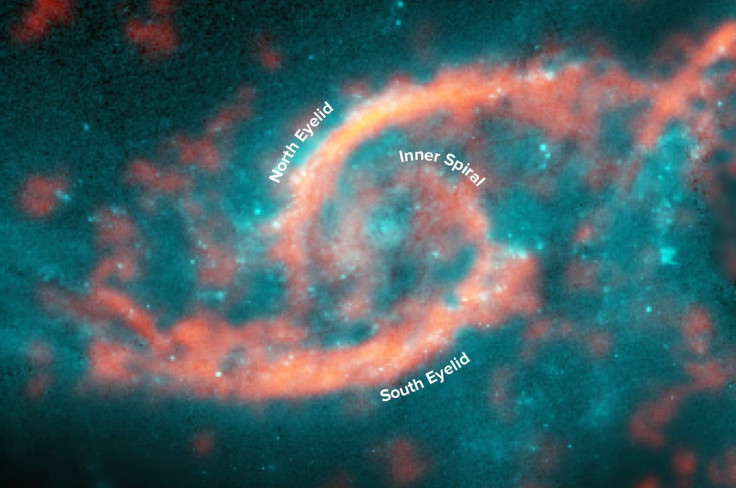Hubble Space Telescope Spies A Distant Collision Between Two Gas-Rich Spiral Galaxies

Collision of two galaxies — each made up of billions of stars — is an event that is as cataclysmic as it is violent. Take IRAS 14348-1447 — a distant structure formed due to a tug-of-war between two galaxies, which was captured by the Hubble Space Telescope.
The image, released by NASA and the European Space Agency (ESA) on Tuesday, shows an irregular smudge located over a billion light-years from Earth. Astronomers believe this structure, IRAS 14348-1447, was created when two gas-rich spiral galaxies ventured too close sometime in the past, each getting caught in the other’s gravitational pull — an act of mutual destruction that ended with the galaxies merging into one.
“IRAS 14348-1447 is one of the most gas-rich examples known of an ultraluminous infrared galaxy, a class of cosmic objects that shine characteristically — and incredibly — brightly in the infrared part of the spectrum,” ESA said in a statement accompanying the image. “Almost 95 percent of the energy emitted by IRAS 14348-1447 is in the far-infrared!”
The energy emission is fuelled by the galaxy’s immense reservoir of molecular gas, which is also responsible for its “ethereal” appearance.
Galactic collisions can often give rise to structures that exhibit a dazzling variety of features. In November, for instance, a team of researchers using the Atacama Large Millimeter/submillimeter Array (ALMA) in Chile spied the end results of another such collision that took place 114 light-years from Earth.
This structure, which contained a star formation resembling a pair of eyelids, was created when a “tsunami” of stars and gas crashed through the disk of a spiral galaxy known as IC 2163 as it grazed past another spiral galaxy named NGC 2207.

© Copyright IBTimes 2024. All rights reserved.





















